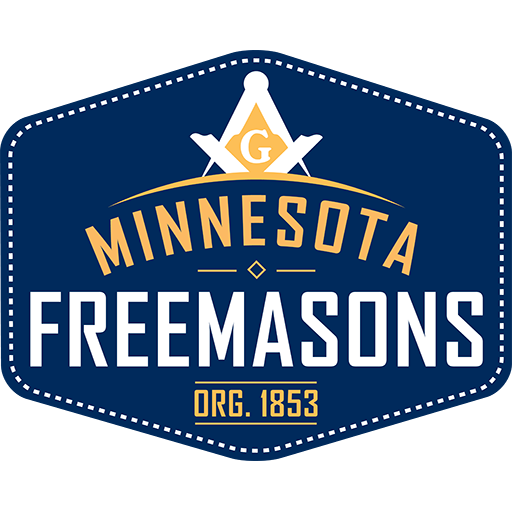A Journey Through Time: The History and Evolution of the Minnesota Masonic Home
The Minnesota Masonic Home (MMH) stands as a testament to the enduring legacy of its founders and the compassionate spirit of its residents and staff. From its humble beginnings in 1920 to the grand establishment it has become today, MMH has undergone numerous transformations, providing care, comfort, and a sense of community to its residents for over a century. Recently a group of Masons had the opportunity to tour the Home and visit the museum. Because of their feedback, we wanted to share a brief historical timeline of the early days of Minnesota Masonic Home.
1920: The Home’s Inception and Early Residents
In 1920, MMH welcomed its first superintendents, Charles, and Ella Wilson, who resided on-site. The “Old Home,” the original estate home of Marion Savage, was the residence for its first resident, Cevila Burdic, admitted in August of the same year. This marked the beginning of MMH’s mission to provide a home for seniors needing care and companionship.
1921: The Retirement of Gideon S. Ives
Gideon S. Ives, the visionary and first president of the Minnesota Masonic Home Corporation board of trustees, retired. His dedication and commitment to the Home’s establishment laid the foundation for its future growth and success.
1924: The Farmstead and Its Importance
A significant development occurred in 1924, as MMH completed the construction of a farmstead west of Normandale Boulevard. The farmstead included various facilities such as a dormitory, stock barn, hog house, creamery, ice house, pump house, and paint shop. The farm was crucial in providing the Home with food and income, allowing residents to work and contribute to the community.
1927: The Main Guest Lodge and the Eastern Star’s Generosity
In 1927, the Main Guest Lodge, the adjoining Dining Hall, and the Power House were completed, enhancing the living conditions for the residents. The Order of the Eastern Star chapters demonstrated their support by raising $75,000 for the Home’s furnishings, adding to the comfort and beauty of the living spaces.
1929: Water Tower and the Renaming of Ives Lodge
A 100,000-gallon steel water tower was added to the farmstead in 1929, further improving the Home’s infrastructure. The same year, the MMH trustees honored Gideon S. Ives by renaming the “Old Home” to Ives Lodge as a tribute to the founder’s commitment and dedication.
1936: Ives Lodge, A Haven of Contentment
In 1936, the MMH Annual Report praised Ives Lodge, the original Home unit, for its warm and contented atmosphere. Residents formed a small, happy family, living in delightful surroundings, reflecting the Home’s mission of providing a place of peace and comfort for seniors.
1940-1952: Infirmary, Farm, and Changes
In 1940, a 52-bed Infirmary building replaced the Home’s hospital, providing better medical care for the residents. However, in 1950, the original Ives Lodge was razed, and all residents moved into the Guest Lodge. In 1952, the Home discontinued the use of the farm, marking a significant shift in the organization’s focus.
1954-1958: Staff Dorms and Expansion
In 1954, the Power House and Laundry facilities were remodeled into staff dorms, allowing MMH employees to live on-site. These changes also created space for 30 additional residents in the Guest Lodge. Four years later, in 1958, a 47-single-room addition connected the Infirmary to the Guest Lodge, further expanding the Home’s capacity to care for more individuals.
1967: The Masonic Care Center Dedication
In 1967, MMH celebrated the dedication of the 156-bed Masonic Care Center. This new facility allowed all patients residing in the Infirmary to move into the new space, and the Infirmary was repurposed to accommodate ambulatory guests and Home employees.
1973-2016: Changes and Renovations
Over the years, MMH continued to adapt and evolve. In 1973, MMH sold the farmstead land to a developer, and it became known as River Bluff Estates. Renovations in 1980 improved the Food Service facilities, ensuring residents received the best culinary experience.
1994: A Continuum of Care Community
In 1994, MMH underwent significant renovations, transforming into a continuum-of-care community. Adding Independent Living Town Homes, Assisted Living Apartments, Memory Care, and Transitional Care Units expanded the options available to residents. The creation of the Town Square provided a central hub for amenities, fostering a sense of community and camaraderie.
1998: Eastern Star’s Contribution
In 1998, the Order of the Eastern Star demonstrated its continued support by donating stained glass windows for the OES Chapel, enhancing the spiritual ambiance of the Home.
2016: A Tribute to Freemasonry
In 2016, the Minnesota Masonic Heritage Center was constructed, serving as a working tribute to the concepts and contributions of Freemasonry. The Center included a 443-seat auditorium, Masonic museum, library, and lodge room, enriching the lives of both residents and the wider community.
2020: Celebrating a century of compassionate care
As early as the 1860s, the Freemasons of Minnesota began to plan for a home where their members and others could live out their days in comfort and care. After considerable deliberation, the Masons acquired a large plot of land along the Minnesota River formerly owned by Marion Savage, owner of the famed racing horse, Dan Patch. The property and its facilities were converted into a senior care home, and Minnesota Masonic Home welcomed its first resident on August 3, 1920.
2021:Renovation of the OES Memorial Chapel
In June of 1957, the ground was broken, commencing the Order of the Eastern Star Memorial Chapel construction at the Minnesota Masonic Home. In March 2020, Minnesota Masonic Charities began renovating the 64-year-old chapel with plans to hold a dedication ceremony on April 9, 2021.
As we journey through the timeline of the Minnesota Masonic Home, it becomes evident that this institution has been shaped by its past and continues to evolve with an eye toward the future. With each passing year, Minnesota Masonic Home reaffirms its commitment to providing exceptional care, compassion, and a genuine sense of belonging to those who call it home.
